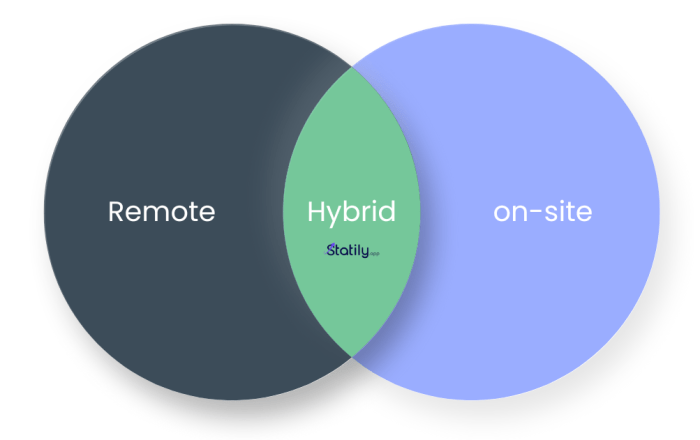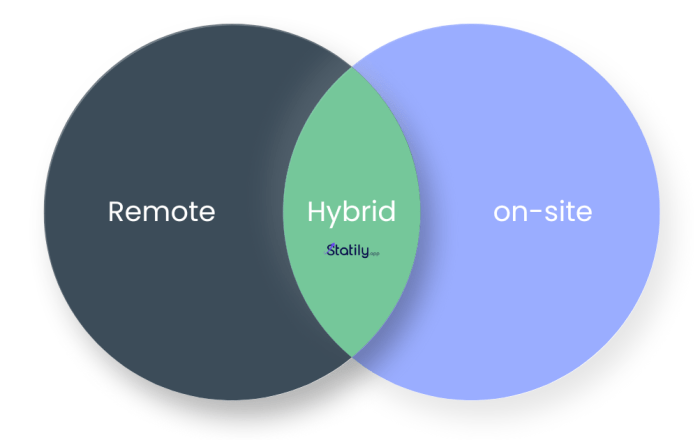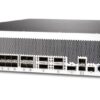Perimeter redefined network security in the age of a hybrid workforce is crucial for modern organizations. Traditional perimeter defenses, like firewalls and VPNs, are no longer sufficient in a distributed work environment. This shift demands a re-evaluation of security strategies, embracing new technologies and approaches to protect sensitive data and systems. The vulnerabilities of the traditional model are stark when compared to the dynamic nature of a dispersed workforce, necessitating a more comprehensive and adaptable approach.
This article will delve into the complexities of modern security, exploring the transition from traditional perimeter models to a more dynamic, zero-trust approach. We’ll discuss the evolving threat landscape, explore the key technologies enabling a redefined perimeter, and provide practical strategies for organizations navigating the challenges of a hybrid workforce.
Defining Perimeter Security in a Hybrid World: Perimeter Redefined Network Security In The Age Of A Hybrid Workforce
The traditional concept of network security relied on a clear-cut perimeter—a physical or virtual boundary that protected the internal network from external threats. This approach, while effective in a largely on-site workforce environment, faces significant challenges in the modern hybrid work model. This shift necessitates a redefinition of perimeter security, adapting to the complexities of a distributed workforce and evolving threat landscape.Traditional perimeter security relied on a strong, centralized defense at the edge of the network.
This involved a layered approach with firewalls, intrusion detection systems (IDS), and virtual private networks (VPNs) to control access and monitor activity. These tools acted as gatekeepers, scrutinizing all traffic entering and leaving the network.
Traditional Perimeter Security
Traditional perimeter security is a security model where the focus is on controlling access to a clearly defined network boundary. The assumption is that all users and devices within the perimeter are trusted, and those outside are untrusted. Firewalls act as the primary line of defense, blocking unauthorized traffic. VPNs create secure connections for remote users to access the internal network, typically through encrypted tunnels.
Intrusion detection systems monitor network traffic for suspicious activity, alerting security personnel to potential threats.
Comparison with Modern Hybrid Work Models, Perimeter redefined network security in the age of a hybrid workforce
The traditional perimeter model struggles to adapt to the decentralized nature of hybrid work environments. Employees now access resources from various locations and devices, blurring the lines of the once-defined perimeter. This distributed workforce necessitates a more dynamic and adaptable security approach.
Vulnerabilities of Traditional Perimeter Security in a Distributed Workforce
Traditional perimeter security’s centralized nature creates significant vulnerabilities in a distributed environment. Remote workers accessing the network from unmanaged devices or public Wi-Fi introduce significant risks. The traditional approach often struggles to identify and respond to threats originating from outside the network or those exploiting vulnerabilities in the remote workers’ personal devices or networks.
Shift in Security Threats and Attack Vectors
The rise of hybrid work has dramatically altered the threat landscape. While external threats remain a concern, the risk of insider threats and vulnerabilities in remote employee devices and networks has significantly increased. Phishing attempts, malware infections, and data breaches targeting remote workers are now more prevalent. Attack vectors have also diversified, encompassing various attack surfaces, from remote access points to vulnerable home networks.
Security Challenges in Hybrid Environments
Organizations face several key security challenges in hybrid work environments:
- Maintaining visibility and control over dispersed devices and networks: Tracking and securing the vast array of devices used by remote employees can be a significant challenge. Security teams need real-time visibility into all network activity, regardless of location.
- Addressing the increase in insider threats: With employees working from various locations, the potential for insider threats—intentional or accidental—has risen. Security measures must adapt to address these new risks.
- Protecting sensitive data in cloud environments: Data often resides in cloud storage, which presents new security challenges, including the need for enhanced cloud access security.
Comparison of Traditional and Hybrid Work Security Models
| Feature | Traditional Perimeter | Hybrid Perimeter |
|---|---|---|
| Network Access | Primarily centralized | Decentralized, diverse access points |
| Security Tools | Firewalls, VPNs | Firewalls, VPNs, cloud access security brokers (CASBs), zero trust network access (ZTNA) |
| Threat Landscape | Primarily external threats | External and internal threats, increased insider risks |
Redefining the Perimeter
The traditional network perimeter, a clearly defined boundary separating internal and external networks, is becoming increasingly obsolete in today’s hybrid work environment. The rise of remote work and cloud adoption has blurred these lines, creating a complex and dynamic landscape that demands a more adaptable and secure approach to network protection. This necessitates a shift towards a “redefined perimeter,” a more flexible and comprehensive security model that encompasses the entire attack surface, not just the traditional network edge.The redefined perimeter isn’t just about replacing walls; it’s about implementing security measures that extend beyond the physical network boundaries and encompass all users, devices, and applications, regardless of their location.
This proactive approach is crucial for mitigating the evolving threats that organizations face in a hybrid world.
Zero Trust Network Access (ZTNA)
Zero Trust Network Access (ZTNA) is a cornerstone of the redefined perimeter. ZTNA operates on the principle of “never trust, always verify.” It meticulously validates every user and device trying to access resources within the network, regardless of whether they’re located on-premises or remotely. This approach dramatically reduces the attack surface by restricting access to only the necessary resources and enforcing strict authentication and authorization policies.
Perimeter-redefined network security is crucial in today’s hybrid work environment, where employees access company resources from various locations. Recent high-profile breaches, like the Conner Moucka Snowflake breach, conner moucka snowflake breach us extradition , highlight the vulnerabilities of this new landscape. Understanding these security challenges is key to building robust, adaptable systems that protect sensitive data while enabling remote work.
Approaches to a Redefined Perimeter
A redefined perimeter employs a multi-layered approach to security, incorporating various strategies. Zero Trust Network Access (ZTNA) is a prominent example, dynamically securing remote access and ensuring that only authorized users and devices can access specific applications and data. The security posture is further strengthened by leveraging the capabilities of Cloud Access Security Brokers (CASBs) that enforce policies and controls for cloud applications.
Cloud Security’s Role
Cloud security plays a critical role in the redefined perimeter. Cloud environments are increasingly integral to business operations, and securing access to these resources is paramount. Cloud Access Security Brokers (CASBs) are instrumental in this aspect. They provide visibility and control over cloud applications and data, allowing organizations to implement granular security policies and ensure compliance with industry regulations.
Furthermore, the proper configuration of cloud infrastructure itself is crucial for preventing unauthorized access and data breaches.
Examples of Zero Trust Implementation
Many organizations are actively implementing Zero Trust principles. For instance, a financial institution might restrict access to sensitive trading systems based on user location, device type, and time of day. Similarly, a healthcare provider could implement strict access controls for patient data, only allowing authorized personnel to access specific records. These examples highlight how Zero Trust policies are being applied to protect valuable assets in different industries.
Zero Trust Security Tools
| Tool | Functionality |
|---|---|
| ZTNA | Secure remote access by verifying every user and device attempting to access resources. |
| CASB | Secure cloud access by providing visibility and control over cloud applications and data. |
| MFA | Multi-factor authentication adds an extra layer of security by requiring multiple verification methods. |
| IAM | Identity and access management (IAM) controls access to resources based on user roles and permissions. |
Securing the Hybrid Workforce

The rise of the hybrid workforce has fundamentally altered the landscape of cybersecurity. Traditional perimeter-based security models are no longer sufficient to protect sensitive data and systems when employees are working remotely or from various locations. This necessitates a shift towards more comprehensive and adaptable security strategies that encompass the unique needs of remote and mobile workers.Adapting security measures to this new paradigm requires a nuanced understanding of the threats and vulnerabilities inherent in a distributed work environment.
This includes ensuring secure access to corporate resources, protecting sensitive data from breaches, and educating employees on best practices to prevent security incidents. The following sections delve into critical aspects of securing the hybrid workforce.
Remote and Mobile Worker Security Considerations
Remote and mobile workers often operate outside the traditional corporate network, making them more susceptible to security threats. These threats include phishing attacks, malware infections, and unauthorized access to sensitive data. Critically, the devices used by these employees often lack the same level of security controls as those within the corporate network.
Perimeter-redefined network security is a hot topic in the hybrid work era, focusing on securing the entire network, not just the perimeter. This new approach is crucial for keeping data safe, especially with employees working from various locations. Speaking of tech, the Nubia RedMagic 5G 144Hz display is now available for pre-order at US$579 here. Ultimately, this evolution in network security is vital for the continued success of remote workforces.
Securing Remote Worker Devices
Protecting devices used by remote workers is paramount. Implementing robust security measures on these devices, such as strong passwords, multi-factor authentication, and regular software updates, is crucial. Further, comprehensive data loss prevention (DLP) policies should be in place to prevent sensitive data from leaving the corporate network. Regular vulnerability assessments and patching of the operating systems and applications are also critical.
Managing Access to Sensitive Data in a Distributed Environment
Sensitive data must be carefully managed in a distributed environment. Implementing strong access controls and enforcing strict data usage policies are vital. Zero trust architecture, which assumes no implicit trust for any user or device, is increasingly adopted. This approach validates every access request, regardless of location or device, providing an additional layer of security.
Key Security Policies for a Hybrid Environment
A comprehensive set of security policies is essential for a hybrid environment. These policies should address device security, data access controls, remote access protocols, and incident response procedures. These policies should be clearly communicated and regularly reviewed to ensure they remain effective.
“A robust security policy framework is crucial for maintaining a secure hybrid environment.”
Employee Training and Awareness Programs
Employee training and awareness programs are indispensable in a hybrid environment. Employees need to be educated on common security threats, best practices for password management, and how to identify and report suspicious activities. Regular training sessions, phishing simulations, and readily available resources can significantly enhance employee awareness.
Security Protocols for Remote Employees
| Protocol | Description ||—|—|| Strong Passwords | Enforce strong passwords for all accounts, incorporating a mix of uppercase and lowercase letters, numbers, and symbols. Password managers can aid in creating and remembering strong passwords. || Multi-Factor Authentication (MFA) | Use MFA for all logins to add an extra layer of security. This method requires more than one form of authentication, such as a password and a code from a mobile device.
Perimeter-redefined network security is crucial in today’s hybrid work environment. Keeping everything secure across various locations and devices is a major challenge. Fortunately, companies like Nokia are stepping up with new mobile offerings, like the nokia launches new x series g series c series smartphones , which could potentially play a role in this evolving security landscape.
This focus on secure mobile devices, combined with updated network strategies, is key to maintaining robust security in this new work paradigm.
|| Regular Security Awareness Training | Conduct regular security awareness training to keep employees informed about current threats and best practices. Training should be tailored to the specific roles and responsibilities of employees. || Device Encryption | Encrypt all devices used for work, especially laptops and mobile phones. This ensures that sensitive data remains protected even if the device is lost or stolen.
|| VPN Access | Implement Virtual Private Networks (VPNs) for secure remote access to corporate resources. This creates an encrypted connection between the employee’s device and the corporate network. |
Emerging Technologies in Perimeter Security
The traditional perimeter security model is increasingly inadequate in the face of evolving threats and the hybrid work environment. Modern security demands a dynamic, adaptable approach that leverages cutting-edge technologies to protect sensitive data and systems. This necessitates a shift towards a more comprehensive and proactive strategy that goes beyond simple network segmentation. This section delves into the transformative role of emerging technologies in fortifying network defenses in a hybrid landscape.AI and machine learning are proving crucial in enhancing network security, enabling proactive threat detection and response.
AI and Machine Learning in Network Security
AI and machine learning algorithms are transforming network security by automating threat detection and response. These technologies can analyze vast amounts of security data, identify anomalies, and predict potential threats with greater accuracy than traditional methods. This capability is especially valuable in the context of hybrid work environments where network traffic patterns are more complex and dynamic.
AI-Powered Security Tools
Numerous AI-powered security tools are emerging to bolster network defenses in a hybrid environment. These tools employ machine learning algorithms to identify malicious activity and proactively respond to threats. Examples include:
- Intrusion Detection Systems (IDS) with AI/ML: IDSs are enhanced by AI/ML to detect zero-day attacks and advanced persistent threats (APTs) more effectively. They learn from historical data to recognize patterns indicative of malicious activity, and adjust their detection capabilities dynamically.
- Security Information and Event Management (SIEM) Systems with AI/ML: SIEM systems, which collect and analyze security logs, are augmented by AI/ML to identify anomalies and potential threats in real-time. They correlate events to uncover malicious activity, providing crucial insights into security breaches.
- Automated Threat Response Systems: These systems use AI and ML to automate the response to security incidents, including isolating compromised systems, blocking malicious traffic, and restoring services. This automation significantly reduces response time and minimizes the impact of attacks.
Security Information and Event Management (SIEM) Systems
SIEM systems are vital for managing and analyzing security events in a hybrid environment. They provide a centralized platform for collecting, correlating, and analyzing security logs from various sources, including firewalls, intrusion detection systems, and endpoint devices. This consolidated view allows security teams to identify patterns, anomalies, and potential threats more effectively. A robust SIEM solution is essential for incident response, threat hunting, and compliance reporting.
Secure Access Service Edge (SASE)
SASE is an emerging architecture that consolidates various security and networking functions into a cloud-delivered platform. It provides a secure, consistent access experience for users regardless of their location, whether working from the office or remotely. This centralized approach simplifies management and enhances security posture in the hybrid work environment.
Threat Intelligence Platform
A threat intelligence platform plays a crucial role in a hybrid environment by providing real-time information about emerging threats. By analyzing threat intelligence feeds, security teams can proactively identify and respond to emerging threats, improving the overall security posture of the organization. This platform often provides actionable insights that inform security strategies and allow for more effective mitigation of threats.
The platform aggregates data from multiple sources, including open-source intelligence (OSINT), private feeds, and internal threat detection systems.
Security Strategies and Implementation
The hybrid workforce model necessitates a reimagining of traditional perimeter security. Organizations must adapt their strategies to encompass the diverse locations and devices utilized by employees, moving away from static boundaries and embracing dynamic, layered defenses. This involves a shift towards a more comprehensive approach, emphasizing zero trust principles and adaptable security measures.Implementing a redefined perimeter demands a shift in mindset from relying solely on network boundaries to verifying every user, device, and application regardless of location.
This zero-trust approach necessitates a more granular level of security control, demanding careful planning and execution to ensure seamless operation while maintaining robust protection.
Strategies for Implementing a Redefined Perimeter
Implementing a redefined perimeter involves several key strategies. These strategies must be carefully tailored to the specific needs and resources of each organization. A phased approach, starting with pilot programs and gradually expanding coverage, is often beneficial. Regular reviews and adjustments are critical to ensure ongoing effectiveness.
- Phased Implementation: Begin with pilot programs in specific departments or locations to test and refine the new security posture before full-scale deployment. This allows for identification and resolution of potential issues early on, minimizing disruption and maximizing the efficiency of the process.
- Zero Trust Architecture Adoption: Implementing a zero trust architecture necessitates a fundamental shift in security thinking. This approach verifies every user, device, and application, regardless of location or network access. It involves employing granular access controls, micro-segmentation, and multi-factor authentication.
- Security Awareness Training: Equipping employees with the knowledge and skills to recognize and report potential security threats is essential. Regular training sessions on phishing scams, social engineering tactics, and secure password practices are critical to fostering a culture of security awareness.
- Continuous Monitoring and Improvement: Security is not a one-time implementation; it’s an ongoing process. Continuous monitoring of network activity, threat intelligence, and user behavior is vital for proactively identifying and responding to emerging threats. Regular assessments and audits of the security posture are critical to ensure effectiveness.
Migrating to a Zero Trust Architecture
Migrating to a zero trust architecture involves a multi-step process that encompasses network segmentation, device authentication, and application access controls. Each step must be carefully planned and executed to ensure minimal disruption to existing operations.
- Network Segmentation: Dividing the network into smaller, isolated segments reduces the impact of a security breach. This limits the potential damage from a compromised device or user account.
- Device Posture Management: Implementing measures to verify the security posture of each device connected to the network is crucial. This involves assessing the software and security updates installed on each device.
- Identity and Access Management (IAM) Enhancement: Enhancing IAM to implement robust access controls and multi-factor authentication is vital. This limits access to sensitive resources only to authorized users and devices.
- Application Access Controls: Employing granular access controls for applications and resources, limiting access to only necessary personnel and devices, is critical to the zero trust model.
Hybrid Workforce Security Posture Assessment Checklist
A thorough assessment of the hybrid workforce security posture is essential to identify vulnerabilities and implement appropriate countermeasures.
- Inventory of Devices and Users: A complete inventory of all devices and users accessing the network, including their locations and the applications they use, is necessary to assess the scope of the security posture.
- Vulnerability Scanning: Conduct regular vulnerability scans of all systems and applications to identify potential security weaknesses.
- Network Traffic Analysis: Analyze network traffic patterns to identify unusual activity that could indicate a security threat.
- Security Policy Compliance: Assess adherence to established security policies and procedures across all devices and users, especially those working remotely.
Comparing Zero Trust Security Approaches
Zero trust security approaches vary in their implementation complexity and the degree of granularity they offer. Organizations must select an approach that aligns with their specific needs and resources.
Different approaches might emphasize different aspects of zero trust, like micro-segmentation or identity verification. Evaluating the strengths and weaknesses of each approach is vital before choosing a solution.
Zero Trust Security Tools and Approaches
| Approach | Pros | Cons |
|---|---|---|
| Zero Trust | Enhanced security, granular control, adaptable to hybrid environments | Complexity, high initial cost, requires significant change management |
| Traditional Perimeter | Simple implementation, relatively low initial cost | Limited security in hybrid environments, easily bypassed with compromised devices |
Epilogue

In conclusion, perimeter redefined network security in the age of a hybrid workforce requires a paradigm shift. Moving beyond traditional defenses and embracing zero-trust principles, cloud security, and advanced technologies is paramount. Organizations must proactively address the evolving threat landscape, focusing on robust security policies, employee training, and the integration of innovative tools to safeguard their data and systems in this dynamic environment.
The future of security lies in adaptation and innovation.






